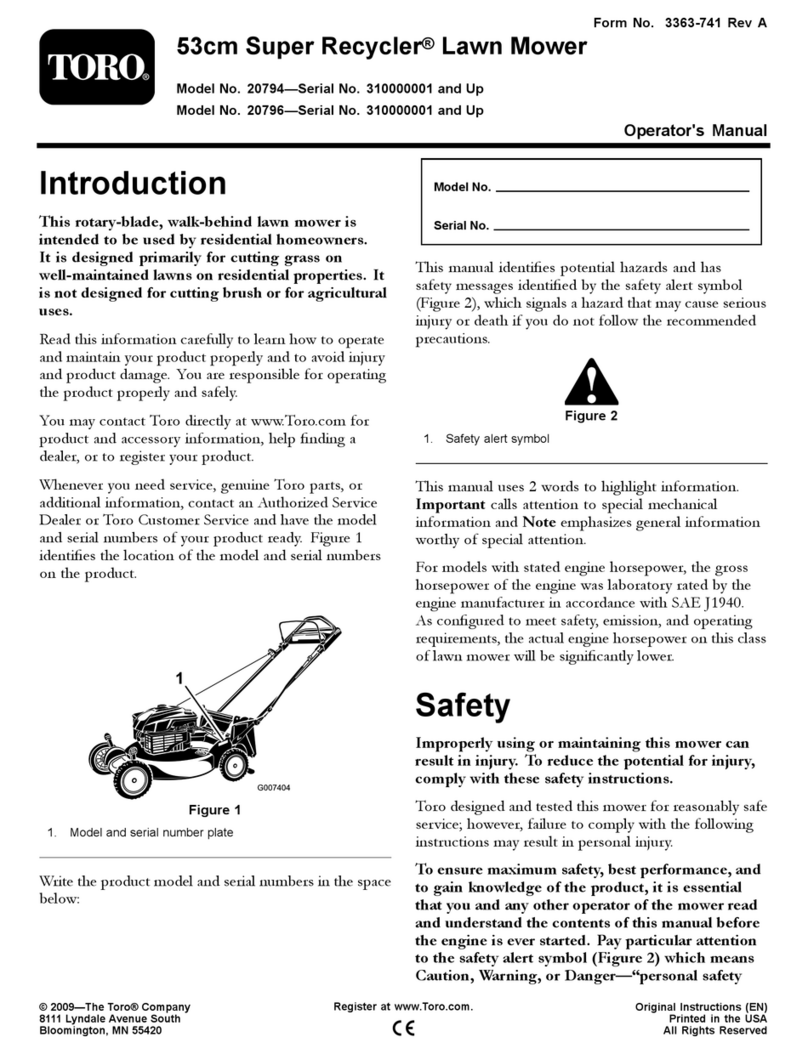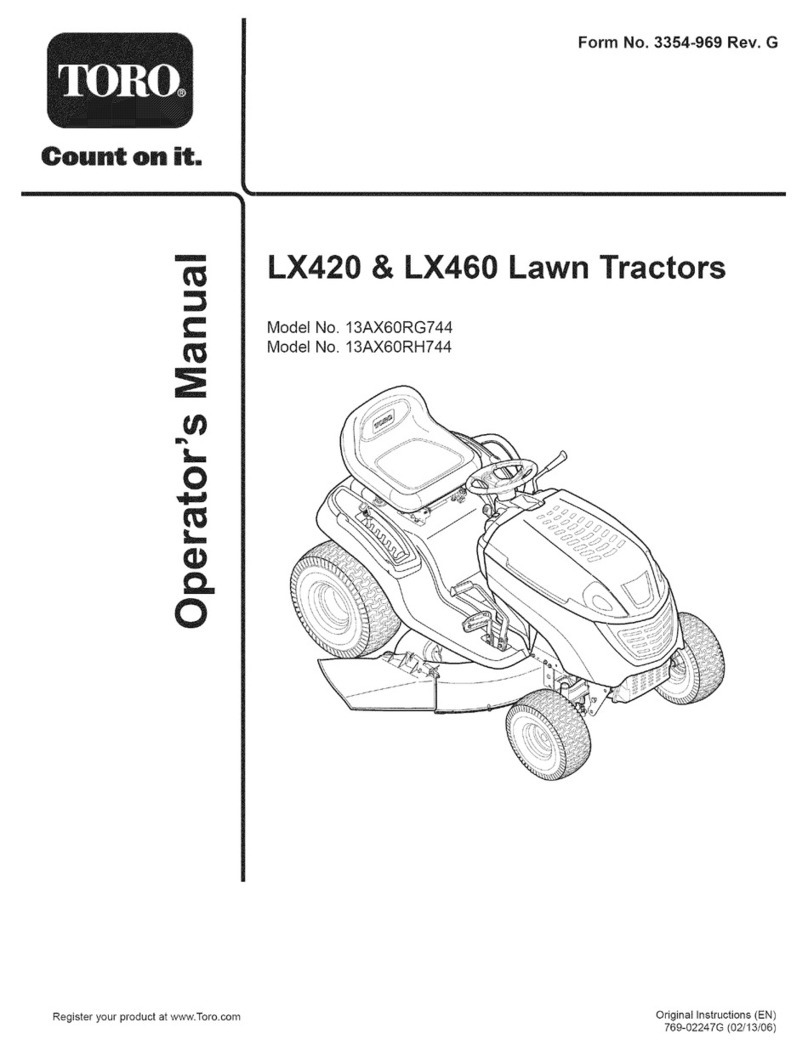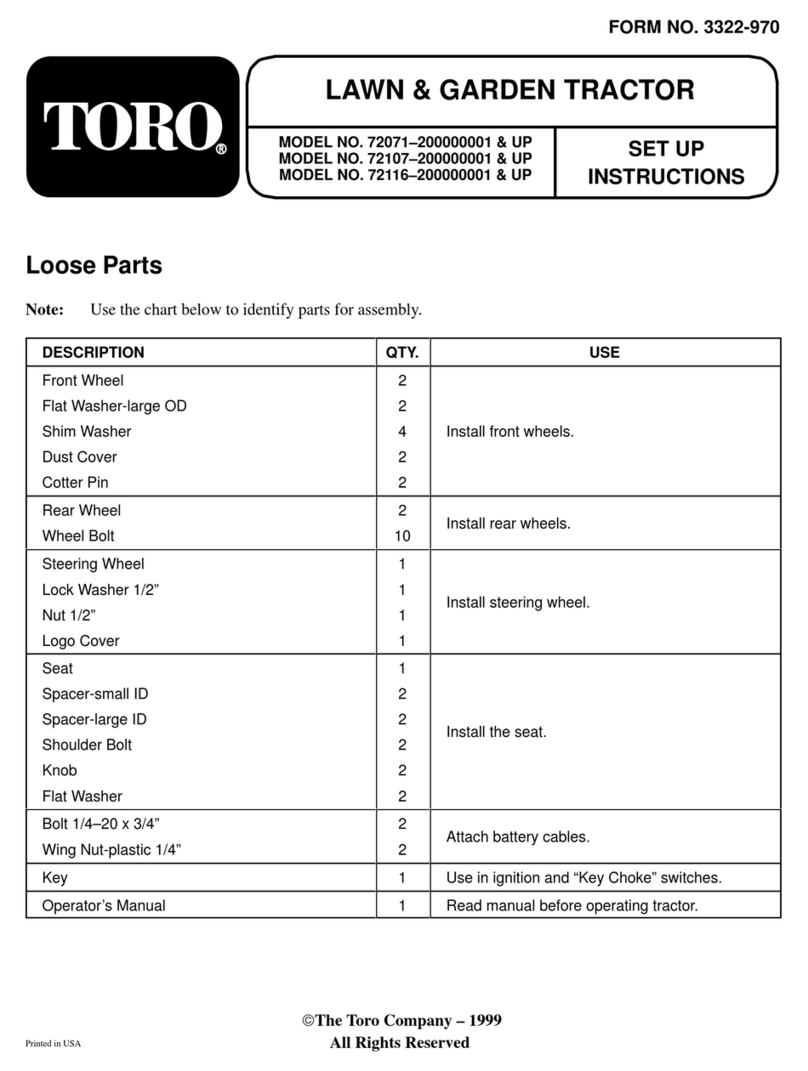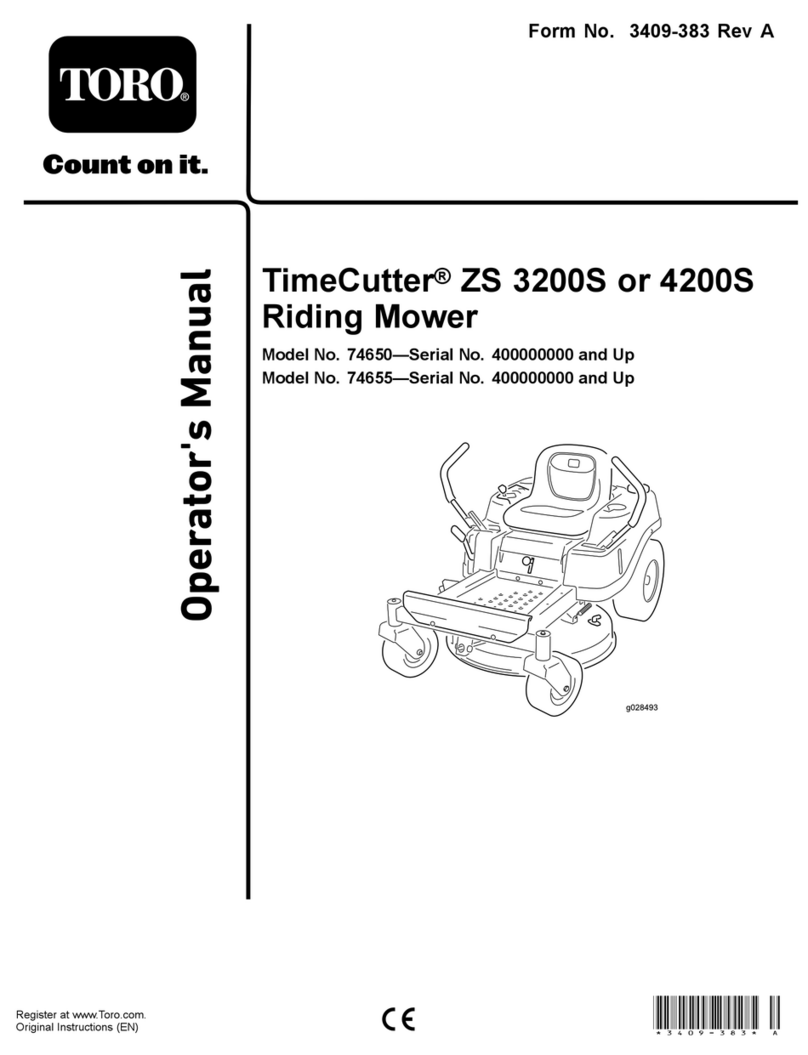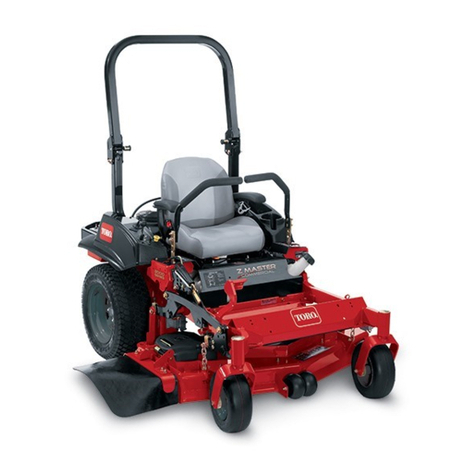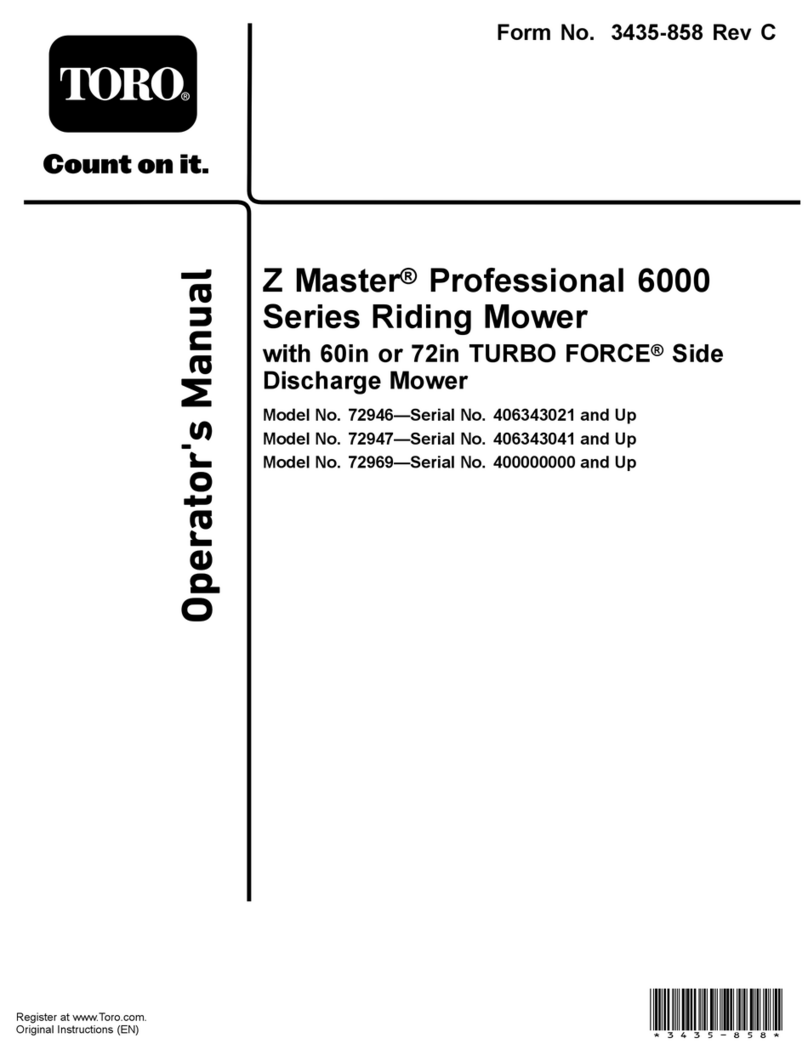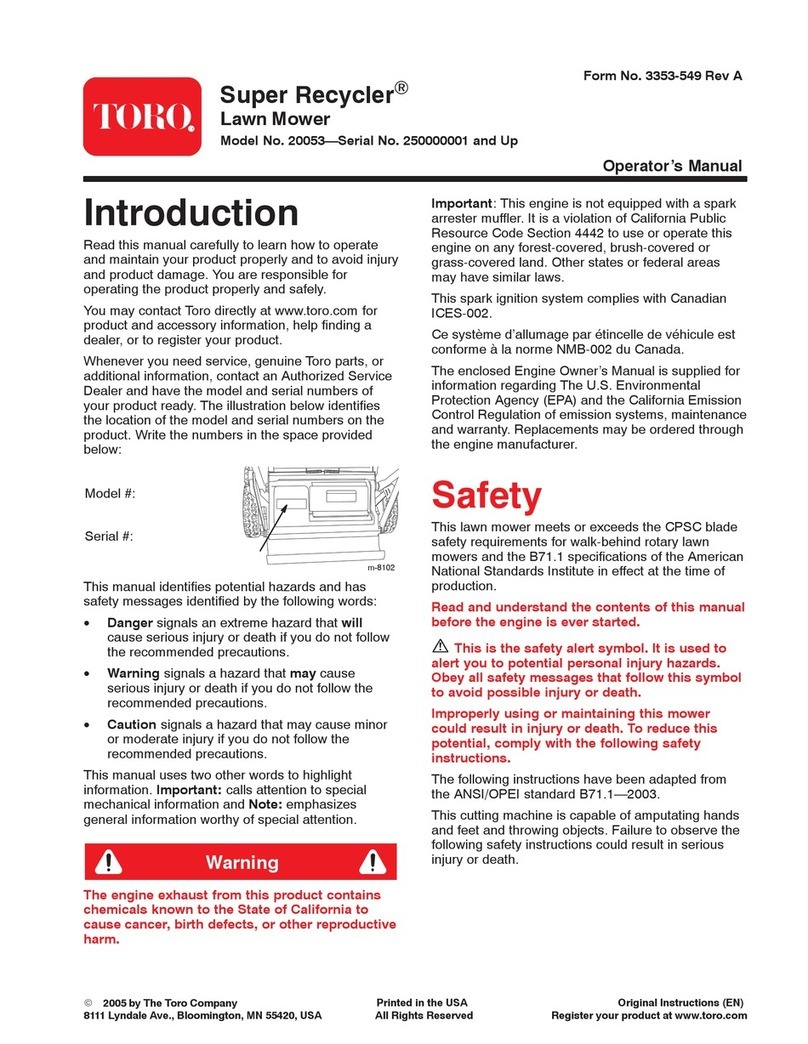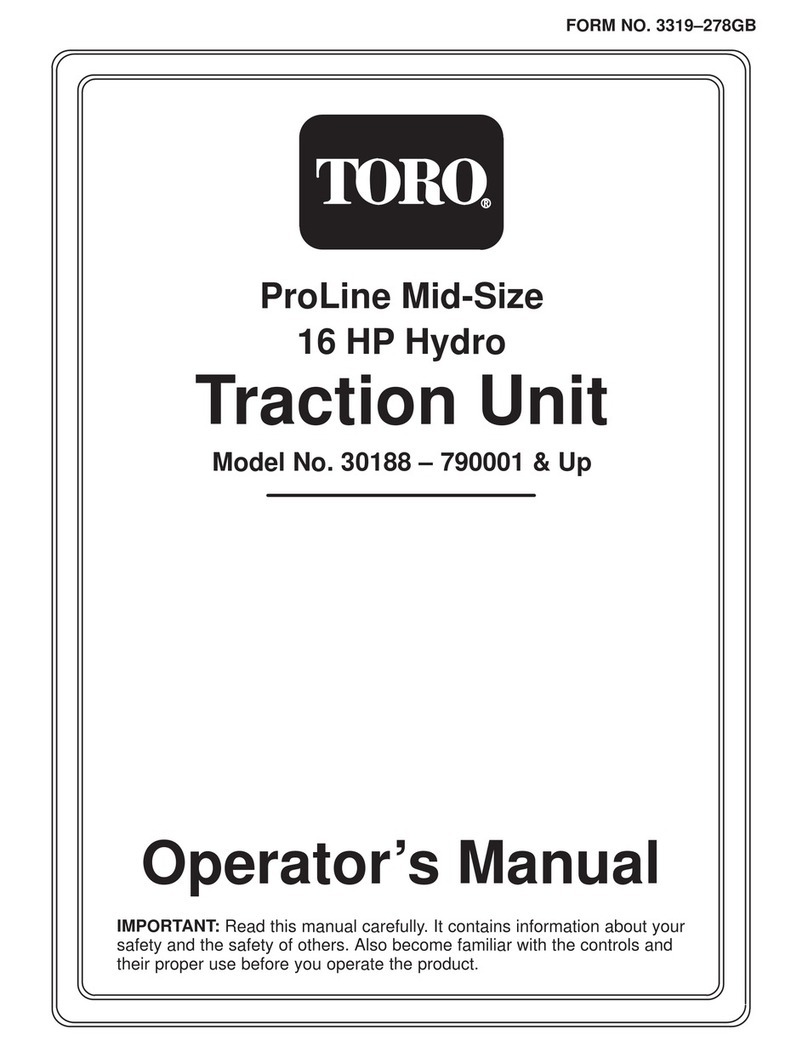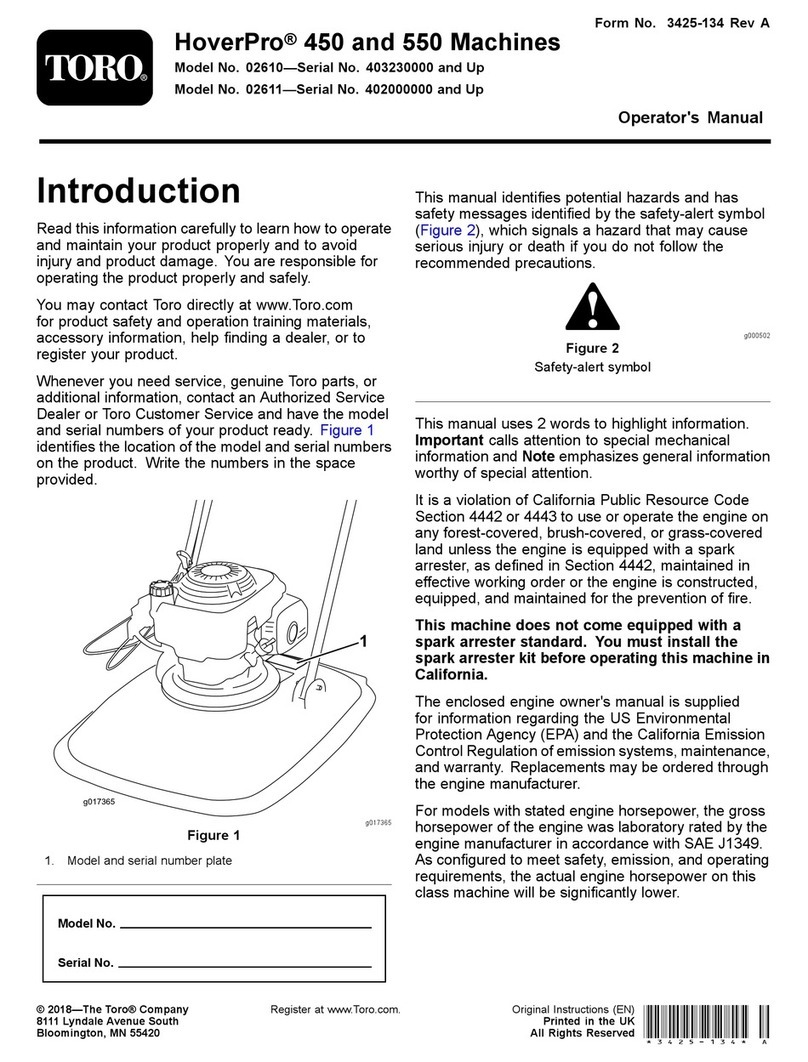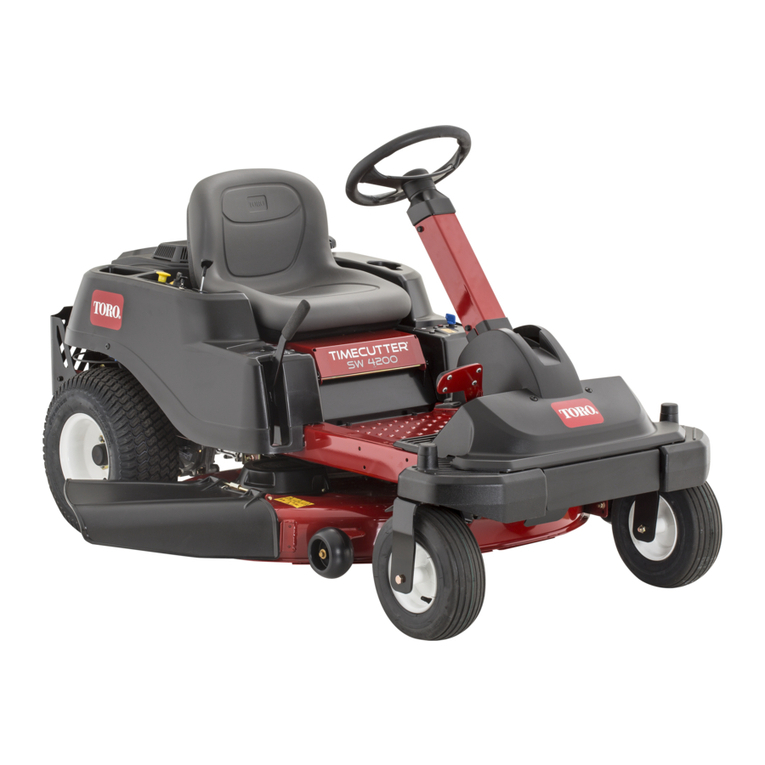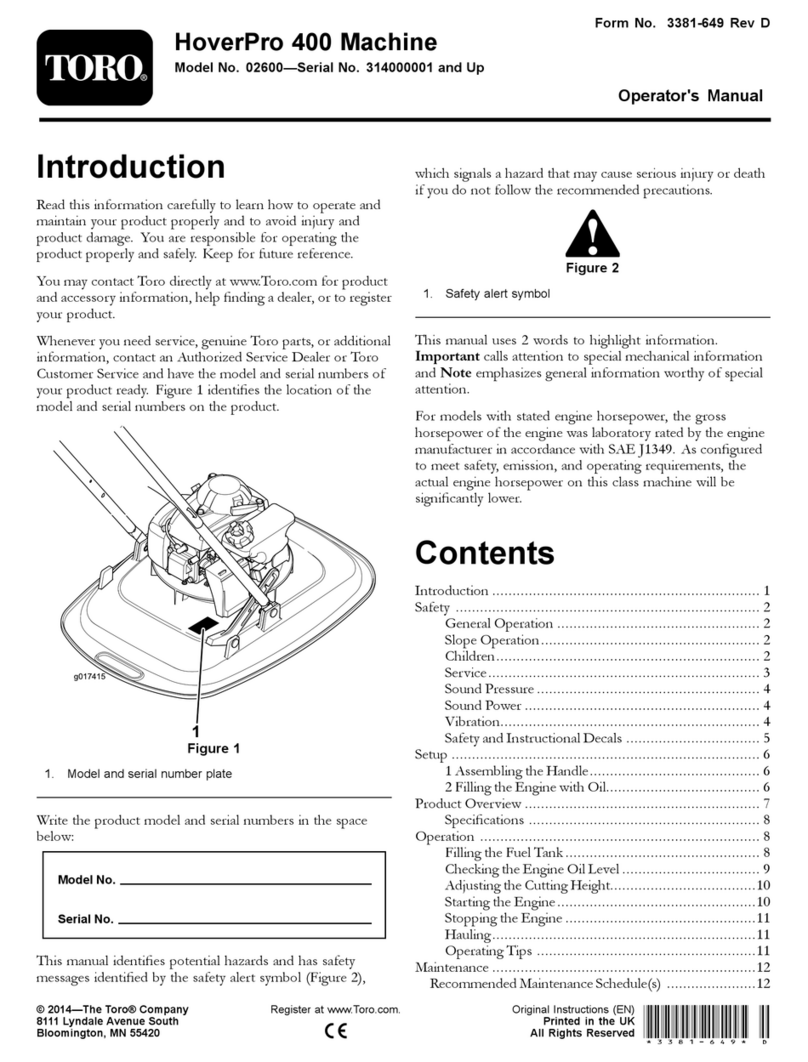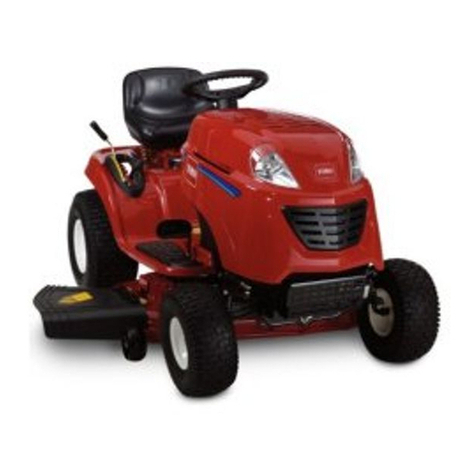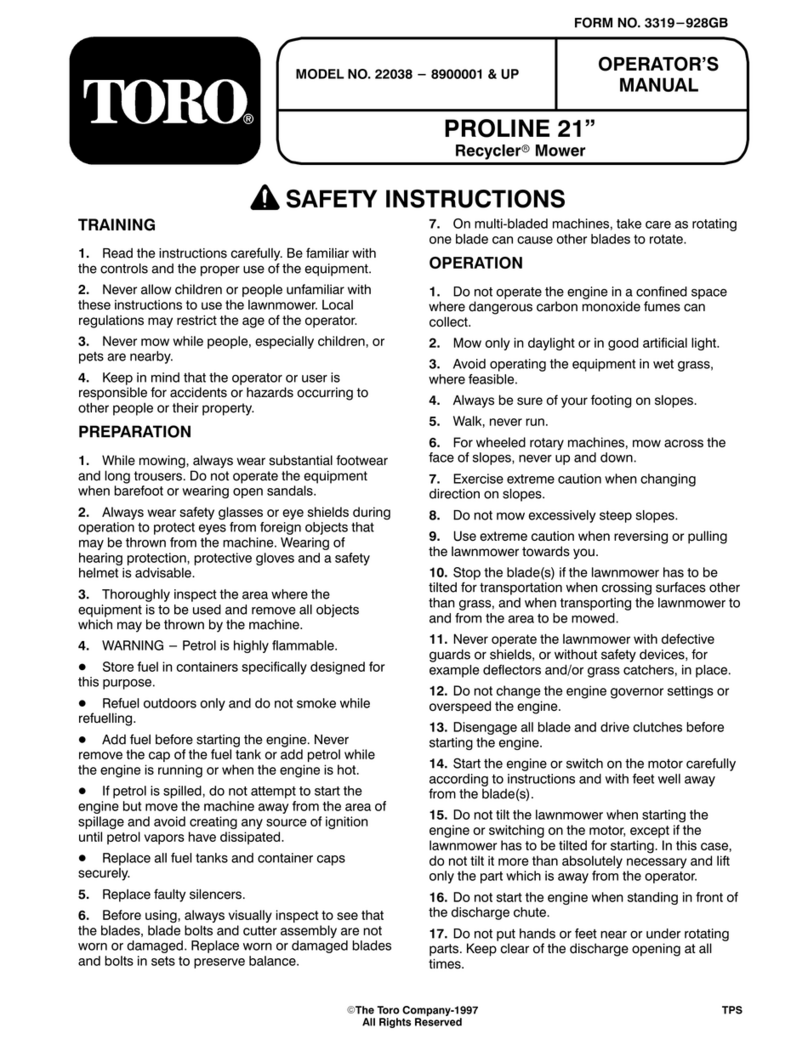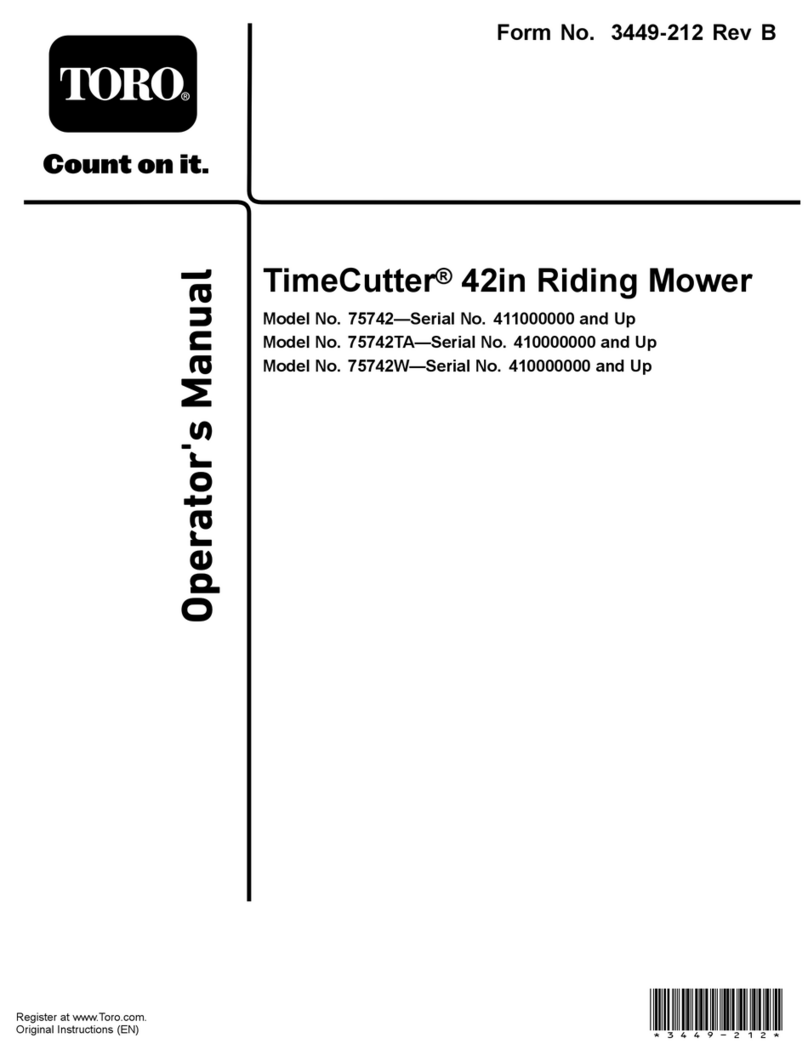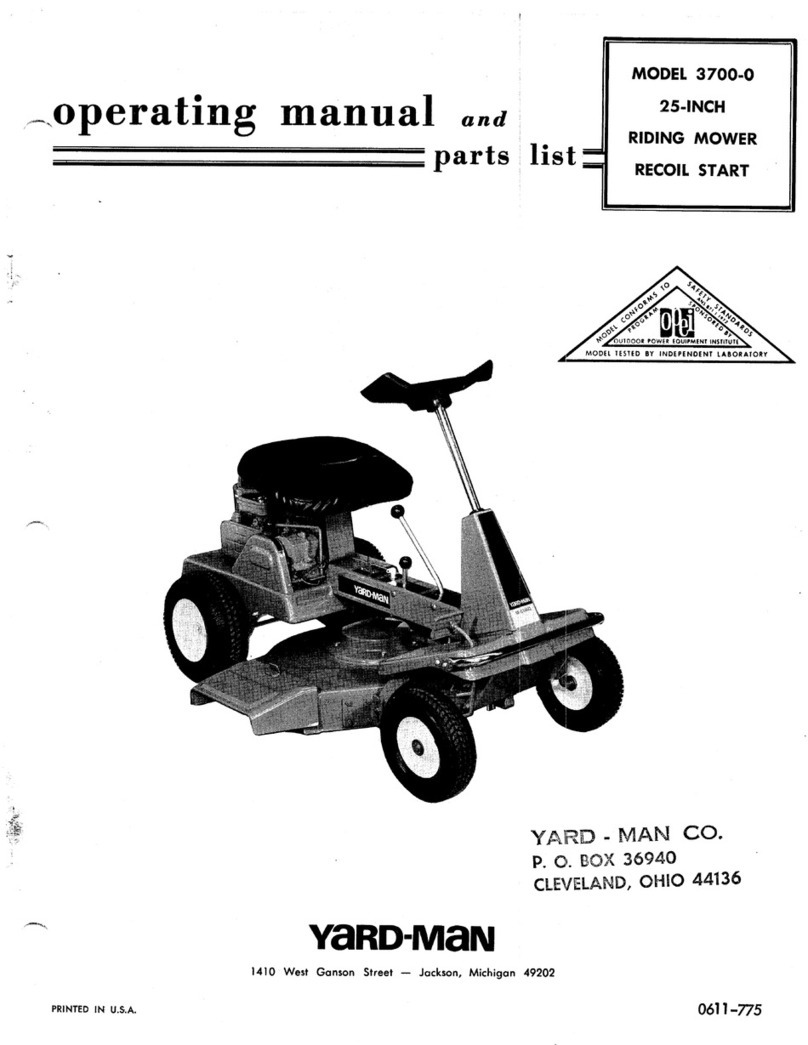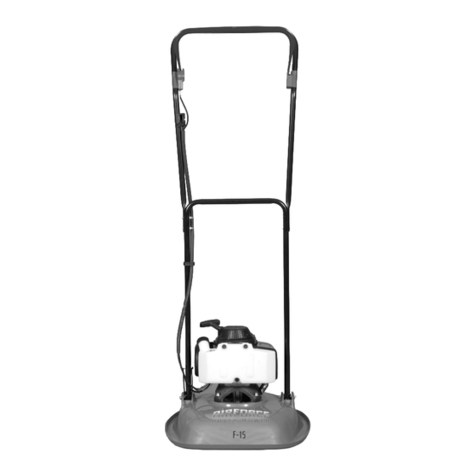Engine:
Manufacturer—Kawasaki
Horsepower—20 (16 Kw) @ 3600 RPM
Displacement—617 cc
Crankcase Capacity—1.6 qt. (1.5 L).
Governor—Mechanical.
Governor Limit—3350–3550 RPM.
Idle Speed—1500 RPM.
Air Cleaner: Donaldson heavy duty with preclean-
er. Remote mounted.
Fuel Tank Capacity: 8.5 gal. (32 l).
Fuel Filter: Replaceable inline type.
Fuel Pump: 12-volt electric (transistor type).
Cooling System:
Radiator—4 qt (3.8 l) capacity.
Expansion Tank—Remote mounted; 1/2 qt (.4 l)
capacity. System contains a 50/50 mix of ethylene
glycol anti-freeze and water.
Electrical: Battery—12-volt, BCI group size 26, 530
Amp at –18°C. 20-amp alternator with
regulator/rectifier.
Drive Coupling: Transmission driven by steel shaft
with flexible rubber couplings at each end.
Transmission:
Manufacturer & Type—Sundstrand hydrostatic, Type
U15.Normal Charge Pressure – 70–150 psi
(483–1034 kPa).
Implement Relief Setting – 700–800 psi
(4826 –5516 kPa).
Hydraulic Filter: 25-micron mounted directly to
transmission. Replaceable (Toro Part No. 23-2300).
Drive Axle: Manufacturer – Dana Corp., Model
GT–20. Axle serves as a hydraulic fluid reservoir
and mates directly with the transmission.
Approximately 5 qt (4.7 l) capacity. 4-Wheel Drive
has mechanical rear axle coupled to front axle by a
drive shaft and clutch.
Brakes: Mechanical drum type, 7 in. (17.8 cm) dia.
x 1-3/4 in. (45 mm) wide. Individually controlled by
two pedals connected by cable and conduit for steer-
ing assist. Pedals may be latched together for two
wheel braking. Lever provided for the parking
brake.
Tires, Wheels, Pressure:
Front Tires—23 x 8.50 - 12
Rear Tires—16 x 6.50 - 8
All tires 4 ply rating, tubeless type.
Pressure—20 psi (138 kPa).
Steering: 13 in. (33 cm) steering wheel. TRW power
steering valve.
Main Frame: Frame is welded, formed steel.
Seat: Adjustable contoured fit with suspension lever.
Instrumentation: Fuel gauge, water temperature
gauge, hour meter and warning lights for high tem-
perature shutdown, oil pressure, amperage are
mounted on the console.
Controls: Throttle, PTO switch, parking brake,
implement lift, ignition switch are all hand-operated.
Forward/reverse traction pedal and turning brakes
are foot operated.
PTO Drive: PTO shaft is clutched by a torque-
teamed HA Section, spring tensioned V-belt directly
from the engine output shaft. PTO shaft engaged by
electric clutch/brake assembly. PTO speed – 2200
RPM @ 3450 RPM engine speed.
Implement Connection—Universal joint and tele-
scoping shaft assembly.
Lift Cylinders: Two, with 2 in. (51 mm) bore, 3.5
in. (89 mm) stroke.
Interlock Switches: Prevents engine starting if trac-
tion pedal or PTO switch are engaged. Stops the
engine if operator leaves seat with either traction
pedal or PTO switch engaged.
Dimensions and Weight:
Length: 208 cm (82 in.)
Width (Rear Wheels): 111 cm (44 in.)
Height: 127 cm (50 in.)
Weight: 416 kg (1116 lb)
9
Specifications
